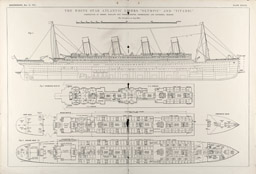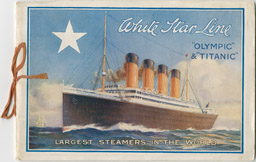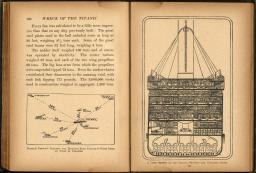
The year 2012 marks the centenary of the tragic sinking of the Titanic on her maiden voyage. Her loss, along with more than 1,500 of her crew and passengers, remains the most famous ocean liner disaster. The story has been retold countless times, but what is less known is the ship’s place in the history of the ocean liner.
Focusing on the disaster alone leaves some obvious questions unasked, chief among them: What would the ship have done if it hadn’t hit an iceberg? We can answer that because the Titanic was the second of three sister-ships. The younger Britannic was still unfinished at the start of World War I. She entered service as a hospital ship in the Mediterranean, where she struck a mine and sank in 1916. Thirty men were lost, but more than a thousand were rescued.
But the distinguished career in peace and war of the older Olympic (1911-35) suggests that the three ships were simply unlucky, rather than poorly built. She survived a collision in 1911 with a Royal Navy cruiser; in 1918 she rammed and sank a German U-boat; and in 1934 she accidentally hit and sank the lightship Nantucket.
Thomas H. Russell, editor, with special articles by Fred S. Miller, the Great Descriptive Writer
Sinking of the Titanic: World’s Greatest Sea Disaster.
A graphic and thrilling account of the sinking of the greatest floating palace ever built, carrying down to watery graves more than 1,500 souls.
Giving exciting escapes from death and acts of heroism not equalled in ancient or modern times, told by the survivors.
Including history of icebergs, the terror of the seas; wireless telegraphy and modern shipbuilding.
Chicago: National Bible House, 1912. 21 cm.
Courtesy of Russell Levere
Marshall, Logan
Sinking of the Titanic and Great Sea Disasters:
A Detailed and Accurate Account of the Most Awful Marine Disaster in History,
Constructed from the Real Facts As Obtained from Those on Board Who Survived . . .
Including Records of Previous Great Disasters of the Sea, Descriptions of the Development of Safety and Life-Saving Appliances.
Dayton, Ohio: Thomas Manufacturing Co., 1912. 350 p., illus. 23 cm.
Courtesy of Russell Levere







